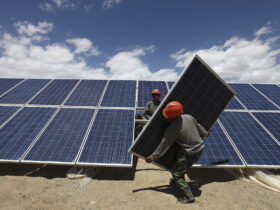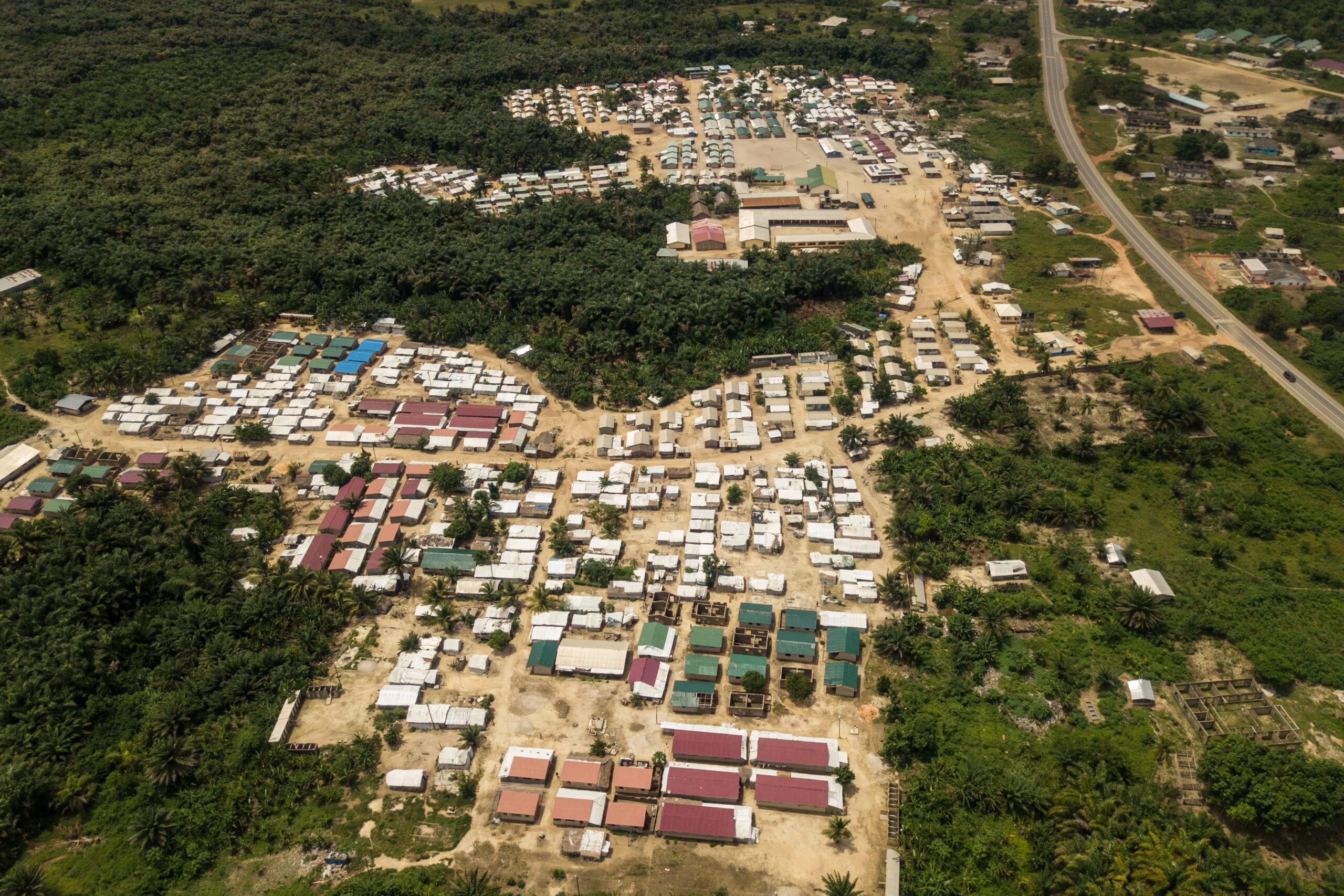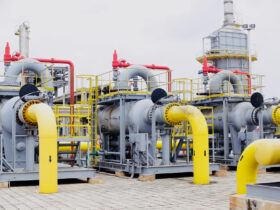
Energy Ghana magazine hooked up with Dr. Alfred Ofosu-Ahenkorah, the Executive Secretary of the Energy Commission. In this interview, he shares his insights on the current status and future of the energy sector, Renewable Energy, local content in the sector, Ghana’s 10% Renewable target, and some achievements of the Commission.
Q: Tell us about your job as the Executive Secretary of the Energy Commission?
A: The Executive Secretary of the Energy Commission is responsible for the day-to-day operation of the Commission and is responsible for anything that goes on here. He is responsible for anything that goes wrong here, and also responsible for anything that goes right. So practically, you are in charge of everything.
Q: On a personal level, what is the most exciting bit about your job?
A: The most exciting part of my job is when I get results. Some negative results will serve as lessons, so you learn from them, so you avoid doing them again or in the same way. Most of the time we plan before doing anything.
So, as we plan, we do risk analysis, ‘what-if analysis’; what if this does not go well, what if what we wanted to do does not go the way we thought it to go? So, we do a lot of that before carrying out the plan and we minimize the risk as much as possible.
Q: As the Executive Secretary of the Commission, what has been your most significant achievement?
A: We have achieved a lot. The Energy Commission is the policy advisor to the government. We published our first policy advisory paper, which we call the Strategic National Energy Plan in 2006 and I’m happy to say that almost all the recommendations in that plan have been implemented.
Though they will not come and tell you that we did it because of you, we follow and we see that they have been implemented. Some of the monumental achievements include the lighting efficiency project which moved Ghana from the inefficient lighting system where the incandescent lamp was the basic lighting device to the compact fluorescent lamp.
And that single work saved Ghana about $39 million in a year and this saving has been compounding since 2007. So that is one principal achievement. The other one is when we introduced efficient refrigeration; implementing standards and labels for refrigeration. And that project in 2015 also saved Ghana 400GWh of electricity, which is about 40% of the output of the Bui dam. And it is occurring every year.
Right now, we have been able to reduce the energy consumption of refrigerators in Ghana from 1200KWh a year to 385KWh a year. So that spread to not only the country but also to individuals because if you use an efficient refrigerator, you pay less. So, these are some of the achievements, there are many more.
Q: What do you look forward to most in the country’s energy sector at present?
A: At the moment, we have significant excess generation capacity. We have what we call an energy glut. We have so many energy resources; electricity, and gas. What we can do is put these energy resources into productive activity.
And if we can do that, it will expand the economy, and create jobs for people. That will be a monumental achievement for the economy, not only for the Energy Commission or the energy sector, but it would be good for the economy.
What we are trying to do to make use of the electricity is that we are trying to introduce electric cars that will use electricity as a motive power. It’s cheaper to use electricity as fuel for vehicles than petrol and people will gladly pay for the electricity that they use to drive around rather than becoming a burden for their homes. These cars have batteries and they have an electric motor instead of an engine.
So, the batteries are charged depending on the type of vehicle and the size of the battery. Some cars can go up to between 200-400km before another charge. So then, we wouldn’t be needing fuel stations but rather charging stations. You can charge in your house, if you have the house charging system, as you go to bed, you can charge it and you’d be okay to go in the morning.
It’s good for people in the cities, but if you’re traveling, it becomes a challenge as there is a limit to how far you can go and then charge, and that’s why we need charging stations along the routes. Now, with modern cars, you can have to 80% charge in 40 minutes.
So, maybe on your way to Kumasi, for example, you can stop at your favorite restaurant, plug it in before you have your meal and by the time you are done, your charging will be done. “We are introducing electric cars this year; we will launch it along with our Renewable Energy Fair in October 2019.”
Q: Which of the sectors in the country’s RE space is fast developing and what do you think is accounting for it?
A: I think solar is developing fast and it is because of the cost. The cost of solar has dropped so fast and so steep that it is now so cheap to build solar plants. Back in 2012, it was selling at $4/W. Today it is about 36 cents per watt for the average polycrystalline model. The cost of battery storage is also coming down – it is less than $200/kWh.
So, it becomes cheaper and adoption is getting faster. A time will come when it will be cheaper than grid electricity. Even now, in some cases, it is cheaper than grid electricity, so more people are shifting to solar.
Q: What do you think about the government’s plan to have public institutions move to renewable energy?
A: The initial capital outlay is big; you need a lot of money before you can do that and you may not be sure that banks will be ready to give you that money. The good thing about solar is that it is good for rural areas.
We have 15% of our population still not connected to electricity and so for these people, renewable solar is the immediate solution. They are not connected because they are far away from the grid, maybe they live on islands which very difficult to connect them to the grid and so solar becomes the most practical way of connecting them.
Of course, we also have wind that can be developed. And then the biomass, we have agricultural waste and municipal waste that can also be used to generate electricity and others, but there is more to it than just that, it is not as simple as that.
Q: The future of RE in Ghana in the next five/ten years?
A: RE has been adopted in Ghana but what we have to do is to be careful how we deploy it. We have grid electricity, if it is not going to reduce the cost of electricity, then let’s hold on. Let’s move it to the areas where grid electricity is not available. But I know that in some countries, solar is much cheaper than grid electricity.
Q: Could there be a time when there would be no grid electricity, only RE?
A: That would be a little bit of utopia. It could happen but not immediately. The problem we have with renewable is that it is not predictable. You can not rely on solar when the sun is not shining.
Though there are storage kits, they are not cheap. Rains even make it worse. Likewise, wind can also stop blowing in seconds. So, it is unpredictable and you cannot rely on it fully. That is the handicap with RE.
Q: Projects of the Energy Commission?
A: The Commission does not undertake projects, rather we provide policy advice. But most times before we do that, we try to test the technologies, we do little pilots and we also develop the market. If you take the lighting efficiency project, the government asked us to do it.
We provided the technical information and the government said to go ahead and do it. We did it once and in three months only, we stopped and the market took over. The same thing with the refrigerators, we did it for three years after that we’ve stopped and the market has taken over.
Q: What are some of the challenges that obstruct your work?
A: It’s a problem that all other government institutions have, and it is money. We don’t always get money to do the things we want to do. This place is specialized and sometimes we don’t get the right personnel, people who are qualified and willing to hit the ground running. So that is another challenge.
We train people, but afterward, they become easily marketable and organizations tend to poach them. We have lost quite a number to international organizations. When they come here, they interview our people and when they realize that they have potential, they poach them.
Q: How is the Commission facilitating the SUNREF Project and how is it going to help local banks and investments in the RE sector?
A: One of the biggest problems our people have is financing in the RE sector. If you are an organization and you want to build a renewable energy facility, financing becomes a problem.
So SUNREF is a solution to that problem… they are now ready to give money to those who want to develop RE projects. So, they are providing the financing through banks. So definitely, the interest will be lower since it is focused on RE.
It is something that anybody who is trying to develop renewable knows where to go and it is strictly limited to Ghanaians / Ghanaian companies. And I must say that it is also for energy efficiency.
Q: How is local content faring in Ghana’s energy sector?
A: Local content from our perspective; we intend to create jobs for Ghanaians. We want to create and grow capital for Ghanaians. Historically, when it comes to the power sector, all private investments are foreign.
But this is a sector that is growing and Ghana is spending a lot of money on that. So why don’t you allow Ghanaians also to invest and benefit? Why don’t you allow Ghanaians to share the risk? When the foreigners come, they say Ghana is risky and because Ghana is risky, they want higher returns.
So, let the Ghanaians share the risks, you all get higher returns and you are all responsible for your investments. We also want to train people, those who can operate the more sophisticated power plants, or do the most sophisticated power installations, so we want to create value addition.
Q: How encouraging is the output of local content efforts so far?
A: Well, anything at the initial stage is difficult, some are ready to go, but others are hesitant. But in all, the bulk of the people are ready to share the risks and go along with the Ghanaians. We are also promoting what is called Local Content. We have a lot of materials in Ghana for our electrical systems.
We have cable manufacturing companies who employ people. Why do we go and import cable if we can produce the same quality here and at competitive prices? We have electricians here, why do we go and bring electricians from outside if the Ghanaians are equally good?
Electric poles, we don’t import wooden electric poles, we have some of the best in the country. So that is the content that we try to create; value addition, that, the value of the energy service, the bulk of it must be from the country.
Q: In light of the various projects being undertaken in Ghana’s RE sector, do you think the 10% target by 2030 is feasible?
A: This ten percent target has been misunderstood by many, and of course, they have their reasons why they choose to understand it that way. Many people have said 10% of electricity must be renewable; some have said 10% of energy.
If you take Ghana, the bulk of our energy is renewable; about 37% of the energy used in Ghana is renewable wood, if you take hydro, 38% of the energy used in Ghana is hydro, which is renewable. So, if you take it in that framework, it means we have exceeded that 10%.
What we are saying is that we want to expand our renewable energy by 10% and the ten percent that many people say is a ceiling that the Energy Commission advocated for in 2006. We considered the cost of renewable energy at the time and determined that if we exceed 10% renewable in our power generation mix, it would be too expensive for the economy.
So, the 10% that appeared in the Strategic National Energy Plan I, the 2006 version, was a ceiling which we were cautioning against that the country should not exceed 10% of our total electricity because it would be too expensive for us to bear.
People, however, read that and say Ghana wants to go 10% but if it’s 10%, then we have exceeded it already. The current target that we are working with is what we have in the Paris Agreement, which is Ghana’s commitment under the Paris Agreement – the Nationally Determined Contributions (NDCs).
That is the target and they are concrete targets; for instance, solar – we go up to between 150 and 300MW, rooftop – 200,000 it is written, wind and others are all targets written under the Agreement. “We are working towards those targets… and we are sure we will achieve it, we will achieve them by 2030.”















Leave a Reply